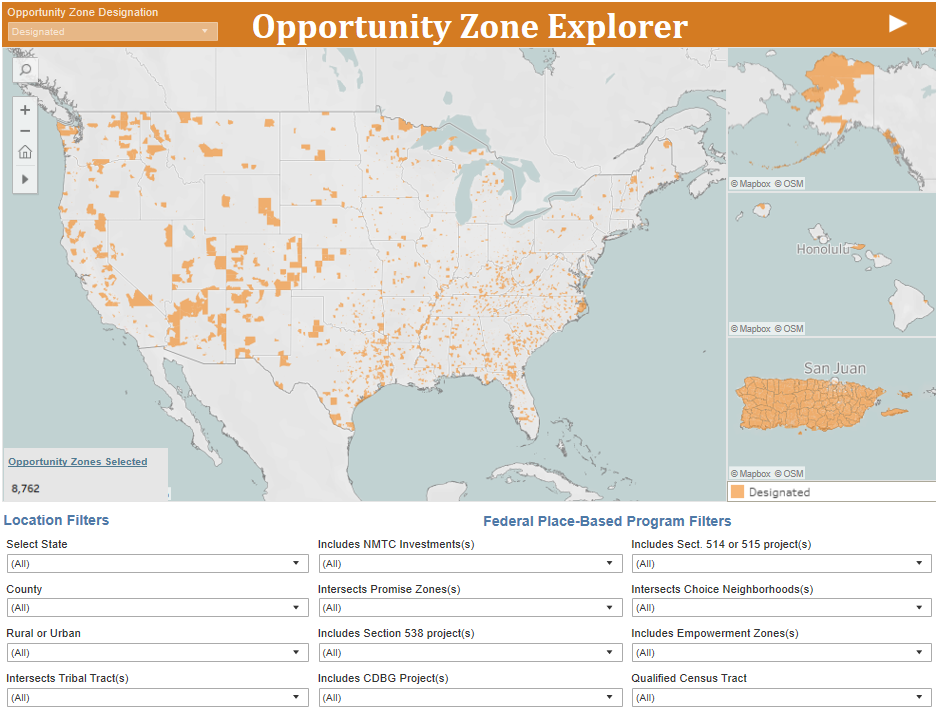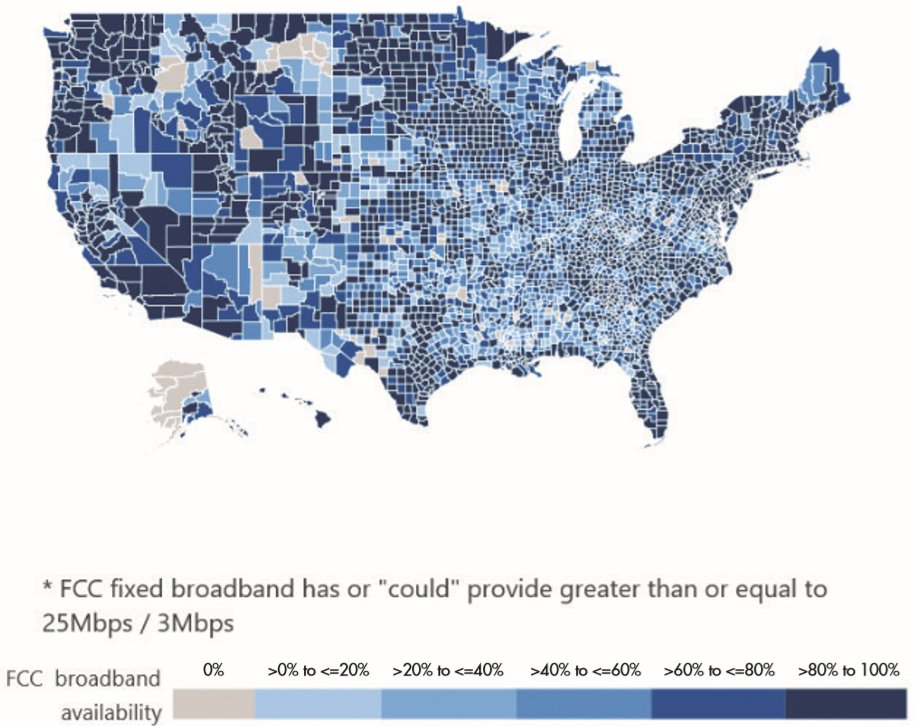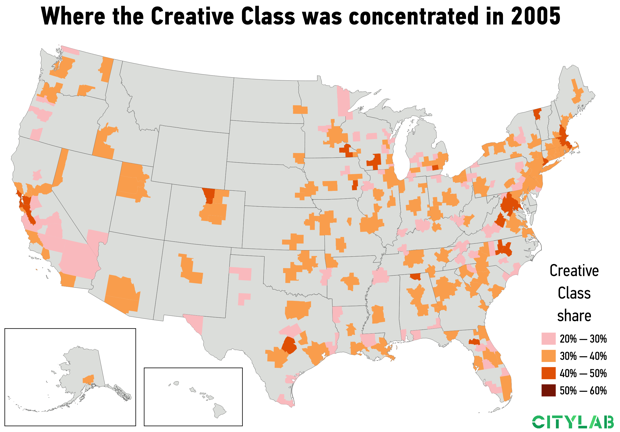Latest News
* SEDE Network Exclusive *
How State Economic Development Agencies are Helping Companies Develop Talent (CREC)
Businesses have been clamoring for talent for the past several decades. Though sustained low unemployment rates make the issue more apparent, the talent shortage that companies are reporting likely reflects structural demographic, organizational and technological changes as well as pressure from global competition to keep costs low while continuously improving products. This paper, developed for the State Economic Development Executives (SEDE) Network, describes promising practices for talent development and how economic development agencies can help companies access the talent they need. Four areas in which economic development professionals can make a critical difference include:
- Skill Upgrading
- Talent Retention and Recruitment
- Pipeline Development
- Cluster and Sector Strategies
Prepared by the Center for Regional Economic Competitiveness (CREC), this paper on Beyond Training: How State Economic Development Agencies are Helping Companies Develop Talent describes the types of activities to cultivate a talent pipeline that state economic development agencies may consider and identifies what some state economic development agencies are already doing.
State Economic Performance
Governor’s Action Guide to Achieving Good Jobs for All Americans (National Governors Association). The Center for Best Practices (NGA Solutions) released a Governor’s Action Guide to Achieving Good Jobs for All Americans. A “Good Job” provides a family-sustaining wage for workers in a context that offers opportunity for continued career growth. The guide outlines opportunities for states to create responsive, nimble training and workforce systems to better prepare Americans for the jobs of the future. These opportunities fall into three focus areas: (1) the workforce of the future – aligning education and work; (2) second acts – helping midcareer workers achieve success; and (3) rural resurgence – empowering the rural workforce. The guide is a result of an NGA Chair’s Initiative that aimed to understand the changing world of work and the factors that affect an individual’s ability to connect to a good job and for businesses to access the talent they need to thrive in today’s global economy. Based on this research, this guide offers a toolbox of high-impact strategies that states can take to connect workers to good jobs today and in the future.
* New Opportunity *
State Policy Academy on Business Regulations (NGA Solutions and Pew). NGA Solutions, in partnership with The Pew Charitable Trusts, will support a cohort of states on strengthening their economies by improving business regulations through an NGA policy academy. Through this project, NGA Solutions, Pew, and external experts will provide technical assistance to selected states over a two-year period. The participating state teams will emerge from the policy academy with greater capacity to identify and pursue supportive regulatory or policy changes, including executive orders, pilot programs, or funding strategies. The strategies may also include pursuing legislative changes. All states and territories are eligible to submit proposals to participate. The Request for Proposals (RFP) from states interested in applying for the policy academy is now available and will be due by Friday, September 20. The project will run from October 1, 2019 through September 30, 2021. For more information, contact Sally Rood.
Topics and Trends
Industry Watch
Aerospace as the Next Frontier to U.S. Manufacturing (Yahoo Finance). The aerospace industry is a global aggregate of public institutions and private corporations focused on research, technology, and manufacturing of products related to flight, atmospheric and beyond. Its scope in national defense, communications, and commercial air travel made aerospace a defining industry in past decades and it promises to be at least as important in the future. Within a decade, for instance, space tourism is predicted to become a multi-billion-dollar industry. Aerospace industry jobs range from assembly line workers to physicists. Titan Gilroy, founder of the company Titans of CNC, joins “On the Move” to discuss more on the world of aerospace as the “next frontier” to U.S. manufacturing, especially after working with companies like SpaceX and Blue Origin.
Trade/Tariffs
U.S. Commerce Department Updates Country Commercial Guides (U.S. Commercial Service). The U.S. Commercial Service of the U.S. Department of Commerce utilizes its global presence and international marketing expertise to help U.S. companies sell their products and services worldwide. Country Commercial Guides are a key starting point to find information about doing business overseas, detailing important factors to help a business decide if a market is right for its product or service. The guides are available for over 125 countries and prepared by trade and industry experts at U.S. embassies worldwide. Each guide provides trusted information about market conditions, opportunities, regulations, business customs, and more on dealing in foreign markets.
Opportunity Zones
New Mexico Economic Development Department Creates OZ Hub Website (New Mexico Economic Development). The New Mexico Economic Development Department (NMEDD) has unveiled a new website so local governments, investors, businesses, and property owners can take advantage and connect with Opportunity Zone resources. NMEDD has created this online hub to facilitate connection between resources and projects at all stages of development. The website includes a map to search for Opportunity Zone projects in specific counties, searchable project pipeline, and a list of Opportunity Funds. Projects can also be submitted to the NM OZ Project Portal. The projects are vetted by NMEDD, summarized and sent out to an email distribution list comprised of resources, investors, funding agencies and local governments. In addition, projects are connected to FundIt-Community, an inter-agency task force of state and federal funding agencies.
Developers, Investors Race to Capitalize on Opportunity Zones (Indianapolis Business Journal). The federal Opportunity Zones initiative, designed to spur investment in low-income communities nationwide, is still in its early stages—but it’s already grabbed the attention of local developers and investors. Perhaps the largest central Indiana project using opportunity zone funding so far is Waterside: a 103-acre, $1.4 billion mixed-use development that Indianapolis-based Ambrose Property Group plans to build at the former GM stamping plant just west of downtown. “It’s an exciting time, and the opportunity zone designation played a big role in making this project possible,” Ambrose founder and CEO Aasif Bade said. Ambrose is seeking to raise a $350 million opportunity zone investment fund. For more information on Opportunity Zones, CDFA has extensive resources available, click here.
Opportunity Zone Explorer Tool Available (Opportunity360). The Opportunity360 team created the Opportunity Zone Explorer to help those interested in opportunity zones determine which tracts in their state or region have been designated and how they relate to other federal programs and designations. In addition, users can filter tracts using several Outcome Indices to see how people living in these tracts are faring across five outcome dimensions and explore tracts that were eligible but not designated by the states as Opportunity Zones. The tool also provides a link to a measurement report providing additional details about the tract.

The Opportunity Zones program provides a tax incentive for investors to re-invest their unrealized capital gains into Opportunity Funds that are dedicated to investing into Opportunity Zones designated by the chief executives of every U.S. state and territory. Treasury has certified more than 8,700 census tracts as Qualified Opportunity Zones (QOZs) across all states, territories, and the District of Columbia. For a map of all designated QOZs, click here.
Inclusive Growth
The Good that Comes with Gentrification Outweighs the Bad (Federal Reserve Bank of Philadelphia). The Philadelphia Federal Reserve Bank used data from the American Community Survey to study the impacts of gentrification on residents in the 100 largest U.S. metropolitan areas. They find that gentrification increases total out-migration among less-educated renters by 4 to 6 percentage points and by slightly less for other renters and homeowners over a 10-year period. The authors point out that these effects are relatively modest since 70% to 80% of renters migrate to new neighborhoods over the same time span. Therefore, the study finds no evidence to suggest that gentrification has negative employment or income effects on residents who leave, but they note that there are unobservable costs such as moving costs and loss of proximity to friends and family. Meanwhile, original residents who stay in the neighborhood benefit from less exposure to neighborhood poverty and higher home values. The study also find some evidence that gentrification increases the likelihood that children of less-educated homeowners who stay will attend and complete college. On balance, the study concludes, the benefits of gentrification outweigh the costs.
Innovation
List of Top 10 Emerging Technologies Announced (World Economic Forum). An international Steering Committee of leading technology experts, sponsored by the World Economic Forum, engaged in a process to identify Top Emerging Technologies. After soliciting nominations from additional experts around the globe, the Steering Committee evaluated dozens of proposals according to several criteria: Do the suggested technologies have the potential to provide major benefits to societies and economies? Could they alter established ways of doing things? Are they still in early stages of development but attracting a lot of interest from research labs, companies or investors? Are they likely to make significant inroads in the next several years?The final list includes: Bioplastics for a Circular Economy – Social Robots – Tiny Lenses for Miniature Devices – Disordered Proteins as Drug Targets – Smarter Fertilizers to Reduce Environmental Contamination – Collaborative Telepresence – Advanced Food Tracking and Packaging – Safer Nuclear Reactors – DNA Data Storage – Utility-Scale Storage of Renewable Energy.
Infrastructure
Seven Lessons on Fixing the Digital Divide (Federal Reserve Bank of Kansas City). A new report from the Federal Reserve Bank of Kansas City focuses on broadband access, economic impact, and solutions for communities to narrow the digital divide. The digital divide refers to the gap between those with and without access to affordable, reliable broadband and the skills and equipment to utilize it. Today, many regions of the U.S. are left without broadband; the Federal Communications Commission indicates broadband is not available to nearly 25 million people. Just 53 percent of adults with incomes less than $30,000 have broadband at home. Nearly 68 percent of people without broadband at home live in rural communities. Findings are organized by seven key themes that emerged throughout the study. Each theme combines relevant research and statistics, and examples of how the issue plays out in our communities. The themes include: Awareness; Change; Rural Broadband; Broadband Adoption; Digital Skills; Equipment; and Evaluation and Collaboration.
Broadband Availability

Deal Makers
Incentives in Action
Pennsylvania Revises Tax Credits After First State Evaluations (The Pew Charitable Trusts). Pennsylvania’s Independent Fiscal Office released evaluations of the state’s Historic Preservation, Film Production, and New Jobs Tax Credits—the first of IFO’s statutorily-required tax credit reviews. And, according to a new Pew Charitable Trusts’ analysis of these reports, several of IFO’s recommendations are already reflected in policy decisions by the state. For example, Governor Tom Wolf approved H.B. 262 implementing several reforms aligned with recommendations from these reports. The passage of this legislation demonstrates that program reviews like the ones conducted by the IFO can help guide substantive policy change. With the publication of these studies, Pennsylvania joined an increasing number of states producing evaluations that look at whether tax credits are producing the desired results—and that offer recommendations on how they might be strengthened.
New Nebraska Economic Development Director Named (Omaha World Herald). Governor Pete Ricketts announced that Lincoln businessman Tony Goins will become the fourth economic development director of his administration. Goins is currently director of branded products for Lincoln Industries, where he leads a sales team responsible for aftermarket truck and Harley-Davidson parts. He is also chief executive officer and a partner in the Capital Cigar Lounge and leads a consulting firm, Business Optimizer and Partners LLC. Goins was formerly the chief operating officer and executive vice president of Cabela’s World’s Foremost Bank and vice president of Cabela’s Retail Corp. before the company was bought out. “Tony understands what it takes to build organizations and recruit new investments to the state.” Ricketts said. “With his talent and experience, we will continue to lead the nation in new projects, build Nebraska’s brand around the world, and keep bringing great job opportunities to the state for the next generation.” Goins is scheduled to start on October 7.
Empire State Development Approves $1.3 billion Belmont Arena Project (Long Island News 12). New York’s Empire State Development board unanimously voted in favor of a $1.3 billion project for a new Islanders arena to be located at Belmont Park. Approval for the new arena and entertainment complex means work could begin soon on the project. Developers of the project plan to build a 19,000-seat arena, upscale shops, restaurants, and a hotel on the vacant property at Belmont. The approval paves the way for the return of hockey’s New York Islanders from Brooklyn. The project is expected to generate an estimated $858 million in revenues and create thousands of jobs.The State Business Incentives Database is a national database maintained by the Council for Community and Economic Research (C2ER) with almost 2,000 programs listed and described from all U.S. states and territories. The Database gives economic developers, business development finance professionals, and economic researchers a one-stop resource for searching and comparing state incentive programs. To view the information available in the database, click here.
New Growth Opportunities
Best Practices in Bioscience Economic Development (Biotechnology Innovation Organization). The bioscience industry has come to play a central role in the economic development priorities of states, cities and municipalities. The BIO Economic Development Best Practices Report is a catalog of state and regional economic development initiatives along with best practice examples that highlight critical facets for a high-performing industry with long-term success. Four key building blocks for bioscience company creation and expansion include: Access to angel and venture capital – States and regions continue to address the continuum of capital needs by providing new sources of funds and other forms of financial assistance; Workforce development initiatives – State workforce programs, community colleges, and universities are expanding programs to expand the supply of qualified workers across the educational spectrum; Technology transfer systems – Innovation partnership models among industry, academia and state government are taking many forms, with the hope that that they will generate new products and companies and develop into successful bioscience clusters; and State of the art facilities – A variety of public and private partners are coming together in many states to invest in state-of-the-art research facilities and innovation centers.
Talent Development/Attraction
Maps Reveal Where the Creative Class Is Growing (CityLab). The creative class now makes up more than half the workforce in several metros. The creative class is defined as the collection of occupations that specialize in the novel combination of knowledge and ideas to solve problems or create value. Established tech hubs like San Francisco, San Jose, and Washington D.C. continue to lead the nation in their concentration of the creative class. But Baltimore and Philadelphia also boast high concentrations, attesting to the power of the east coast corridor. Once-lagging Rustbelt and Sunbelt metros like Pittsburgh, Cincinnati, Salt Lake City, and Las Vegas have also seen substantial creative-class growth over the past dozen years.

Important Principles for Strong STEM Pathways (US Chamber of Commerce Foundation). Successful career pathways are created through deep and meaningful coalitions of organizations. These coalitions bring education, community members, and business leaders together with a shared dedication to meeting society’s biggest challenges in a responsible, sustainable, and profitable way. They blur the lines between formal education, community service, workforce development, and economic development. To create a successful coalition-led career pathway, in STEM or other disciplines: Be Unique; Include Real-World Experiences; Breakdown Barriers; Understand the Difference; Think Differently; Use Research; Empower Students; and Leave a Legacy. The U.S. Chamber of Commerce Foundation’s Talent Pipeline Management (TPM) initiative is based on these principles. They work with states and regions to build partnerships and coalitions so that initiatives to prepare youth for the jobs of tomorrow are led by the employers who will employ them one day.